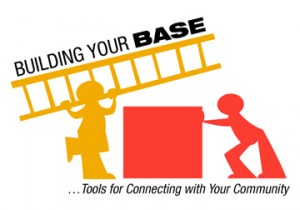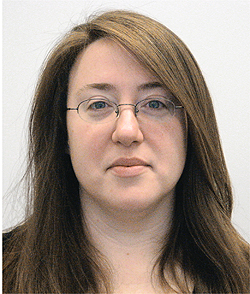2018 School Spending Survey Report
Perceptions Have Improved, So Where’s the Money?
Will marketing result in increased funding? According to Library Journal’s November survey, most libraries think not—unless your library is serving a population of 500K+. Then 70 percent of the participants believe marketing helped. Interestingly, the majority of those surveyed from libraries of all sizes believed marketing increased their perceived value to elected officials and the community at large. If libraries could apply the influence of advocacy to their marketing strategies, they might see an increase their funding.

Nancy Dowd
Will marketing result in increased funding? According to Library Journal’s November survey, most libraries think not—unless your library is serving a population of 500K+. Then 70 percent of the participants believe marketing helped. Interestingly, the majority of those surveyed from libraries of all sizes believed marketing increased their perceived value to elected officials and the community at large. If libraries could apply the influence of advocacy to their marketing strategies, they might see an increase their funding.Advocacy -- what it is and what it isn’t
I had the opportunity to listen to Ken Haycock, Research Professor of Management and Organization, University of Southern California, during the Advocacy Institute at the American Library Association (ALA) Mid-Winter conference. Haycock’s definition has become a mantra for him throughout the years: “Advocacy is a planned, deliberate, and sustained effort to develop understanding and support incrementally over time.” Of course, he is not alone in this definition: ALA and its divisions have been working tirelessly to educate libraries on this topic. He suggested libraries’ campaigns to increase funding were seldom based in research; lacked the metrics needed to measure results to know if funding increased; and didn’t conduct the evaluation needed to make improvements. It sounded harsh, but how many times have we heard of a new campaign designed to increase funding without ever reading about whether funding increased? Advocacy isn’t a single event or a one-time meeting with your local official. It isn’t necessarily about telling the entire world everything your library does. It is about making connections with stakeholders, understanding what they value, and mapping out the ways you can build relationships to influence them in your favor. Sounds a little like what we do when we market, doesn’t it?
Advocacy isn’t a single event or a one-time meeting with your local official. It isn’t necessarily about telling the entire world everything your library does. It is about making connections with stakeholders, understanding what they value, and mapping out the ways you can build relationships to influence them in your favor. Sounds a little like what we do when we market, doesn’t it? Should you protest or partner?
You’d do better to go with partnerships. Haycock’s studies show that when it comes to funding, libraries are better off building relationships with elected officials rather than waging protests or conducting letter writing campaigns. In fact, he says elected officials are more likely to give money to people they know and like. Taking it a step further, he suggests you learn what they value and understand how they make their decisions. That way you can present your case from their point of view and easily connect how helping your library will help them achieve their goals. Good advice for marketing as well.Does size matter?
 The answer is no, if you ask Rebekkah Smith Aldrich, Coordinator for Library Sustainability, Mid-Hudson Library System (and a 2010 LJ Mover & Shaker). Aldrich’s project, “Building Your Base,” has been helping libraries target audiences to promote services, create customer loyalty, and gain more supporters. She points out that smaller libraries tend to do a lot with word-of-mouth marketing and relationship building. “They may underreport their marketing efforts because it’s not the shiny stuff, but they are definitely out there building relationships.”
The answer is no, if you ask Rebekkah Smith Aldrich, Coordinator for Library Sustainability, Mid-Hudson Library System (and a 2010 LJ Mover & Shaker). Aldrich’s project, “Building Your Base,” has been helping libraries target audiences to promote services, create customer loyalty, and gain more supporters. She points out that smaller libraries tend to do a lot with word-of-mouth marketing and relationship building. “They may underreport their marketing efforts because it’s not the shiny stuff, but they are definitely out there building relationships.” 
Rebekkah Smith Aldrich
Aldrich told the story of Phoenicia Library in New York. A small library with even a smaller budget, Phoenicia found itself in need of a new building after a fire gutted the old one. They wanted to rebuild a larger facility, and with the support of community members are on their way to getting the necessary approvals, despite protests and a lawsuit by its direct neighbors. “They had fabulous support from the community. They’d post information on their website and Facebook, and every time there was a hearing 100-200 people showed up in support. Here is an example of a small library with no money, but the community knew and valued them. That’s the real power of advocacy,” explained Aldrich.Is there money in visiting elected officials?
Well, they won’t be handing you cash over the table, but face-to-face visits are an essential part of building relationships. These strategies will work any time you visit an elected official, whether you are stopping by their office, addressing them at council, or welcoming them to your library.- Know your objectives and your audience. The key to a successful visit is homework, homework, homework. Aldrich conducts a boot camp prior to legislative days to educate librarians on the issues. She makes up mini profiles on officials that include issues of interest, and then her group helps librarians connect the dots to the libraries’ issues. They also provide guidance on how to act during the meeting.
- Have statistics and stories ready to articulate your points. A few years ago I gave a workshop for librarians on speaking to elected officials to develop stories that supported continued funding. I’ll never forget the emotional reaction of an elected official when a librarian shared the story of how a patron whose son was diagnosed with cancer was able to conduct research through the library’s databases and guide him to the right doctors and ultimately, a healthy outcome. Stories make the emotional connection; statistics seal the deal.
- Have a follow up plan. It’s all about a sustained effort, so make sure you know how you’re going to continue those relationships. Victoria Falcon, Public Relations/Marketing Coordinator at Southern Maryland Regional Library, is always looking for ways to increase the touch points that connect the library’s message with elected officials. Her strategies helped to turn a meet-up event into a powerful relationship building experience. Each year, Maryland delegates host an annual meeting for small businesses, non-profits, and organizations. The event gives everyone a chance to shake hands with the elected officials. They set up the booth to take pictures of the delegates for a READ poster. Invitations were sent ahead of the event to come to the booth, and then a follow up email was sent with the photo and an invite to visit the local library. And of course, she made sure the library’s messaging was on the photo. They were delighted when Congressman Stany Hoyer came to the booth. The congressman’s team was so pleased when they received the poster that they tweeted the picture to his 18,000 followers.
Tweeting for dollars?
Certainly social media provides access to elected officials’ opinions and activities like never before. At the very least, follow your elected officials. You may even want to set up searches on topics relevant to your library. Falcon loves Twitter as an outlet for advocacy. She is connected to every local, county, and state official, and makes sure she retweets anything related to her libraries, including education and jobs. The key to her success is that she connects the dots for readers. A typical retweet would include a message saying, “Our libraries are concerned about this too.” Over time she has built an important relationship with the crew that runs her governor’s social media. That relationship resulted in an invitation to the governor’s first-ever “Tweetup,” where she was able to address a significant financial issue her library was facing and gain his support. “There were only 12 people there, and when I was asked if I had any issues, the governor gave me complete attention. I wouldn’t have been there had I not used social media as part of my advocacy tools,” explained Falcon.Marketing for Dollars
Obviously, marketing and advocacy go hand-in-hand. Both require you to know what is important to your community, build relationships, and articulate your value. Library Journal’s survey touches on the gap between a positive perception of the library and the commitment to increase funding, reinforcing the need for libraries to embark on advocacy efforts that are planned, measured, and evaluated.A Little Inspiration to Get You Going
- Urban Libraries Unite: This group is full of amazing ideas. Their latest is The Volunteer Library Brigade, where they will be rolling out tiny mobile library carts to the sidewalks, parks, and subway stations of New York City. They will look stuff up, hand out books, run storytimes for kids, offer directions, advocate for libraries, and more. The carts (kindly donated by Demco, thanks Demco!), will be stocked with reference books, maps, giveaways, WiFi, and more.
- Library Snapshot Day: A way for libraries of all types across a state, region, system or community to show what happens in a single day in their libraries.
- National Legislative Day: Learn from the pros. Register for the 39th annual National Library Legislative Day (May 7 & 8 at the Liaison Hotel in Washington, DC), the two-day advocacy event where hundreds of library supporters, leaders, and patrons meet with their members of Congress to champion national library funding.
RELATED
RECOMMENDED
TECHNOLOGY
ALREADY A SUBSCRIBER? LOG IN
We are currently offering this content for free. Sign up now to activate your personal profile, where you can save articles for future viewing









Add Comment :-
Comment Policy:
Comment should not be empty !!!
Charlie
The answer certainly isn't crapping out more and more unemployable LIS graduate students. Someone please inform Mr. Haycock.Posted : Nov 24, 2013 06:35
Peggy Barber
Thanks Nancy! Your article, with its fine examples, does the much needed job of describing advocacy as a tool of marketing. It's all about listening and building relationships. YES!!!Posted : Apr 03, 2013 05:41